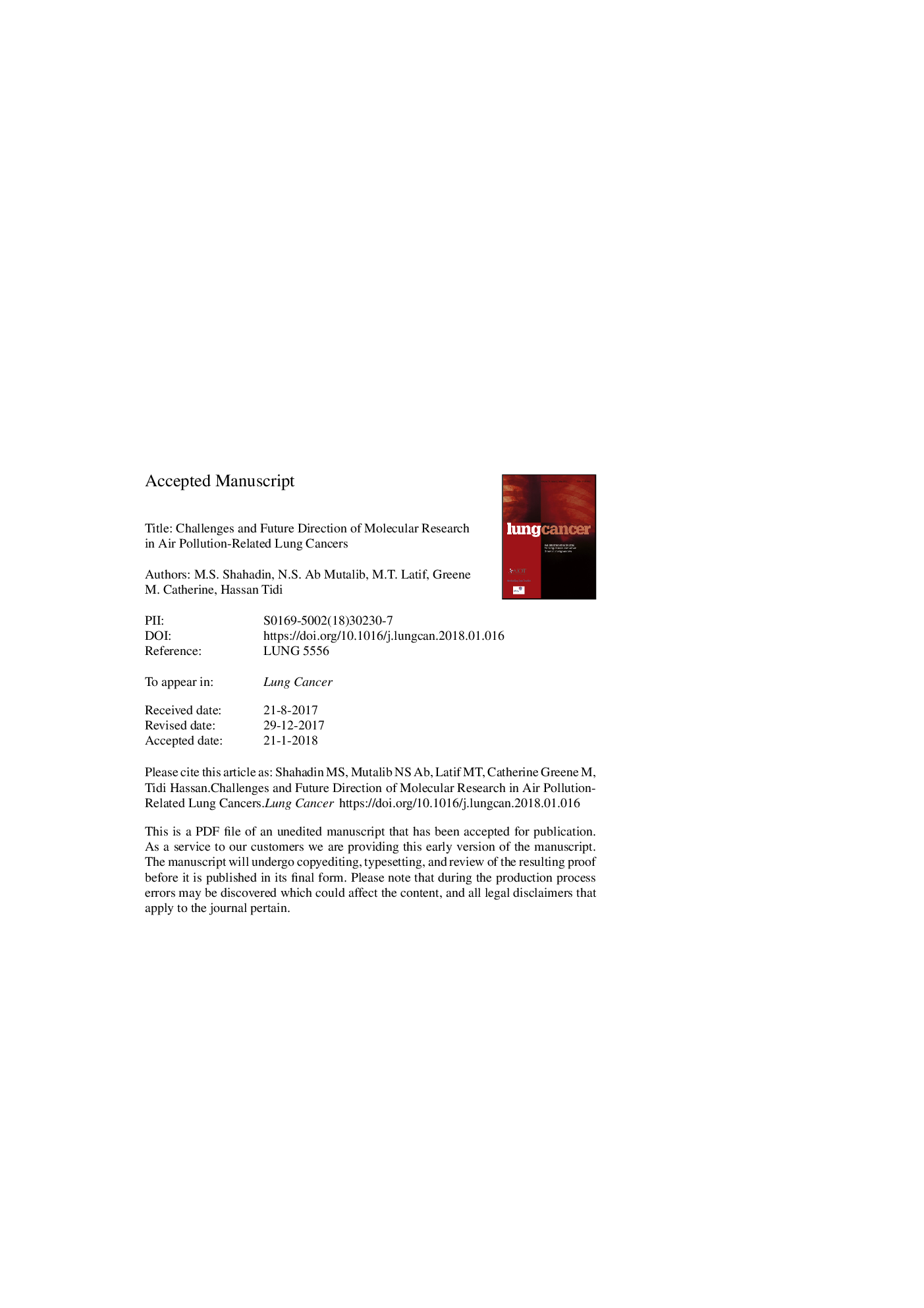| Article ID | Journal | Published Year | Pages | File Type |
|---|---|---|---|---|
| 8453913 | Lung Cancer | 2018 | 28 Pages |
Abstract
Hazardous air pollutants or chemical release into the environment by a variety of natural and/or anthropogenic activities may give adverse effects to human health. Air pollutants such as sulphur dioxide (SO2), nitrogen oxides (NOx), carbon monoxide (CO), heavy metals and particulate matter (PM) affect number of different human organs, especially the respiratory system. The International Agency for Research on Cancer (IARC) reported that ambient air pollution is a cause of lung cancer. Recently, the agency has classified outdoor air pollution as well as PM air pollution as Group 1 carcinogens. In addition, several epidemiological studies have shown a positive association between air pollutants to lung cancer risks and mortality. However, there are only a few studies examining the molecular effects of air pollution exposure specifically in lung cancer due to multiple challenges to mimic air pollution exposure in basic experimentation. Another major issue is the lack of adequate adjustments for exposure misclassification as air pollution may differ temporo-spatially and socioeconomically. Thus, the purpose of this paper is to review the current molecular understanding of air pollution-related lung cancer and potential future direction in this challenging yet important research field.
Keywords
HPRPAHTSPGSTM1ZEB1CYP1B1GSTP1GSTT1OGG1BAPA549AKR1C3NSCLCszinc finger E-box binding homeobox 1MMP1Dkk2EREGDNAEn1NOxAdenineAir pollutionInternational Agency for Research on CancerIARC یا International Agency for Research on Cancerdeoxyribonucleic acidlysophosphatidic acidepithelial mesenchymal transitionOzoneNitrogen oxidesBenzo(a)pyreneEMTthymineNitrogen dioxidesSO2Sulphur dioxideparticulate matterWorld Health OrganizationLung cancerNon-small cell lung cancercytosinecytochrome P450 1B1confidence intervalGenome-wide association studyGWASUTR یا untranslated regions untranslated regioncarbon monoxidemolecular mechanismMicroRNAMiRNAodd ratioBiomarkersNO2Polycyclic aromatic hydrocarbonpolymerase chain reactionPCRSingle nucleotide polymorphismsChallengeSNPtotal suspended particulateWHOGuanine
Related Topics
Life Sciences
Biochemistry, Genetics and Molecular Biology
Cancer Research
Authors
Maizatul Syafinaz Shahadin, Nurul Syakima Ab. Mutalib, Mohd Talib Latif, Catherine M. Greene, Tidi Hassan,
